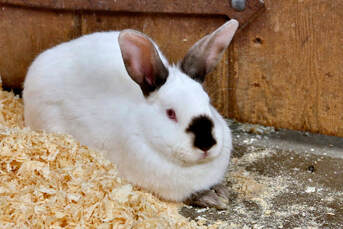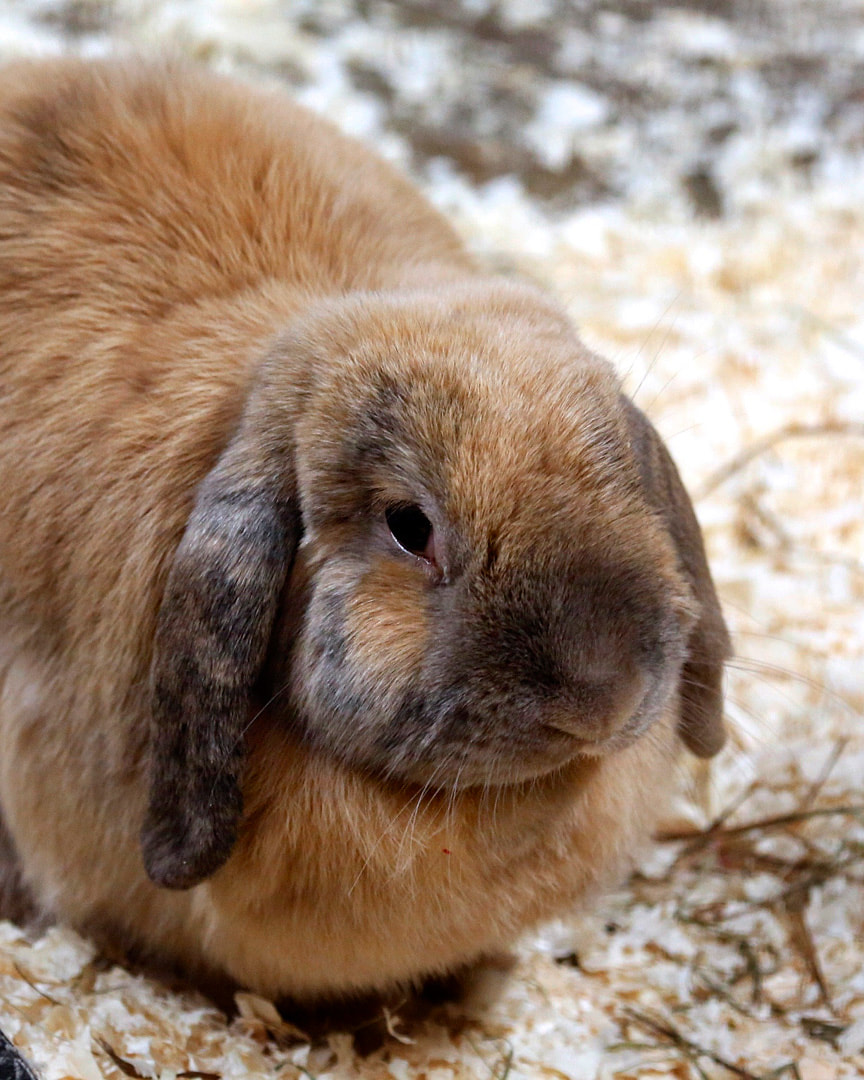Domestic Rabbit (Oryctolagus cuniculus domesticus)
|
Physical Description: The Domestic Rabbit ranges in weight from two to four pounds. The males, called bucks, are usually heavier and taller than the females. Domestic Rabbit ears can grow as long as four inches and serve two purposes: hearing, and heat regulation. Blood vessels in the ears dissipate excess body heat. Domestic Rabbits can rotate their eyes 360 degrees so they can see behind them without turning their heads. They do have one tiny blind spot though. It is right in front of their noses. Domestic Rabbits are natural runners and run in zigzag patterns to get away from predators at up to 18 miles per hour. They can jump up to 36 inches high.
They are different from their wild relatives. They do not tolerate extreme temperatures well. Domestic Rabbits are known to be meticulously clean and like domestic dogs and cats they can be taught to come when called, sit in your lap and do simple tricks. Unlike domestic cats and dogs, Domestic Rabbits do not have padding on their feet. Habitat: They prefer dry areas near sea level with soil soft enough for burrowing. They can also be found in grassy fields or forests where there is ample coverage. Range: More than half of the world’s Domestic Rabbits live in North America but they can call most places home if the temperature is relatively stable. Diet: Domestic Rabbits are omnivores, they will eat fungi, plants, roots, tree bark, fruit, snails, and worms Lifespan: They have a high mortality rate at birth, and can live up to 5 years in the wild and 12 in human care. Social Structure: Domestic Rabbits dig large, complex burrow systems called warrens. They are sociable animals and live in large colonies in the warren. One colony typically consists of six to ten adults. Multiple colonies live within the warren. During a study, one rabbit warren contained 407 rabbits and had a total of 2,080 entrances! The female rabbit, called a doe, makes an underground nest lined with straw, vegetation and fur from her underside. She will give birth to a litter of four to eight live babies, called kits up to eight times a year. Kits are blind at birth and have little fur. The doe does not spend a lot of time with the kits so she does not attract predators to the nest. She will feed them once or twice a day. The kits open their eyes at around 13 days old. Within three weeks they can leave the nest, eat solid food and drink water. At six weeks they no longer nurse. Status: As a domesticated species, they are not assessed by the IUCN, however the wild population of European Rabbits that they are descended from are considered Endangered1. Other: They have 28 teeth that never stop growing! 1 https://www.iucnredlist.org/species/41291/170619657 |








